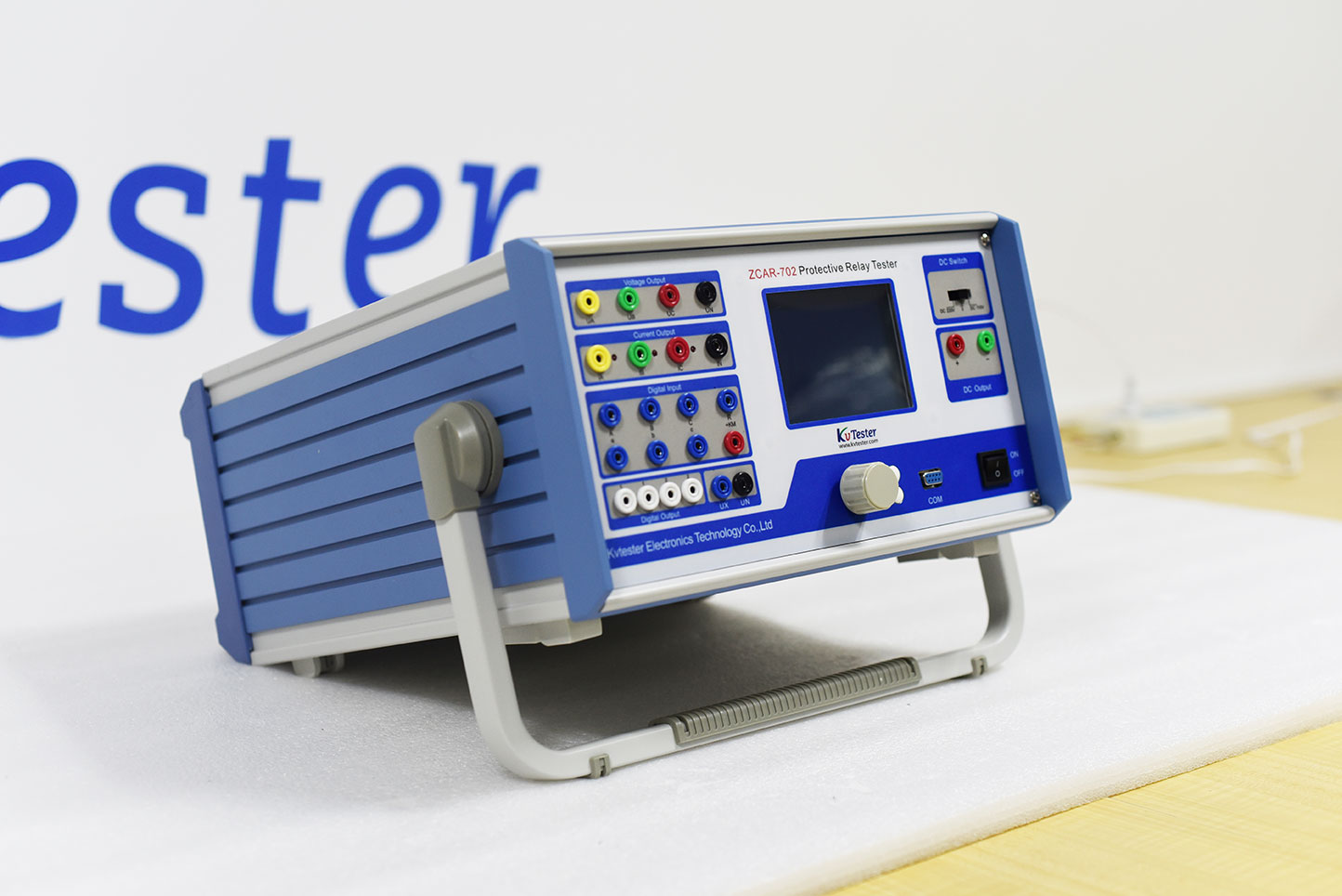Precautions for using microcomputer relay protection tester
1. Microcomputer relay protection tester This instrument can only be used to test microcomputer relay protection devices and cannot be used to test other equipment.
2. To prevent the machine body of the microcomputer relay protection tester from inducing static electricity during operation, the main machine should be reliably grounded through the grounding terminal before the test.
3. The working power supply of the microcomputer relay protection tester is AC220V. It is prohibited to connect to AC380V or other working power sources. During the test, please do not frequently switch the power supply to avoid damage to the instrument.
4. To ensure the accuracy of the microcomputer relay protection tester test, the external circuit of the protection device should be disconnected, and the voltage N and current N should be grounded at the same point. Safety should be taken into account during the test to prevent electric shock accidents.
5. Short circuits are strictly prohibited in voltage testing channels, and open circuits are strictly prohibited in current testing channels. It is strictly prohibited to introduce external AC/DC power into the voltage source, current source, and output jack of the instrument, otherwise it will damage the instrument.
6. The computer equipped with the microcomputer relay protection tester is equipped with system protection software, which protects the C drive. After each restart, any changes made to the C drive will disappear. Do not save any personal files on the C drive.
7. After the output current of any phase exceeds 10A, it should be ensured that the instrument has at least 60 seconds of heat dissipation before conducting the next test. Pay attention to maintaining smooth air flow through the ventilation openings of the chassis, and do not block the ventilation openings to avoid affecting heat dissipation.
8. During the testing process of the microcomputer relay protection tester, if any abnormal situations are encountered, the power supply should be immediately cut off.
9. Do not place the microcomputer relay protection tester in the open air and get wet by rainwater.
10. When the microcomputer relay protection tester instrument is working abnormally, please contact the manufacturer in a timely manner and do not repair it on your own.

KST-702 three-phase relay protection tester is a new type of miniaturized microcomputer relay protection tester, which is based on the "Technical Conditions for Microcomputer-based Relay Protection Test Devices (Discussion Draft)" issued by the Ministry of Electric Power, summarizes the advantages and disadvantages of similar domestic products, and fully utilizes modern advanced microelectronics technology and devices to achieve. The instrument comes with a large screen LCD display and a flexible and convenient rotating mouse controller. Single machine independent operation already has strong functions and can perform most experiments, while connecting to a computer for operation has more powerful operating functions. Small size and high accuracy. It not only has the superior performance and advanced functions of large testers, but also has the advantages of small and flexible testers, simple operation, high reliability, and high cost-effectiveness. It is a handy tool for relay protection workers.
In addition to verifying various relays (such as current, voltage, inverse time, power direction, impedance, differential, low cycle, synchronization, frequency, DC, intermediate, time, etc.) and microcomputer protection, it can also simulate transient and conversion faults from single-phase to three-phase for whole group testing. It can also complete various large-scale and complex verification tasks with high degree of automation, automatically test and scan various protection settings, store test data in real-time, display vector maps, print reports online, and so on.





